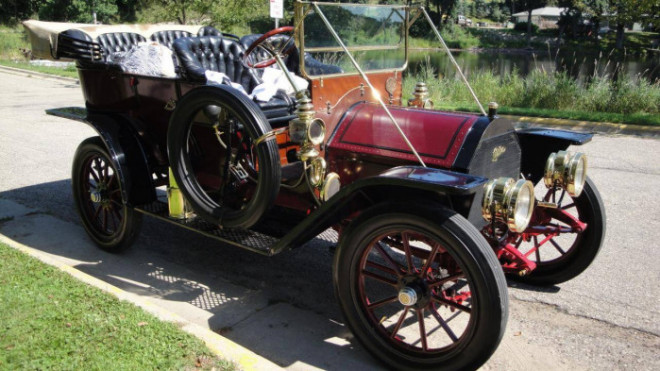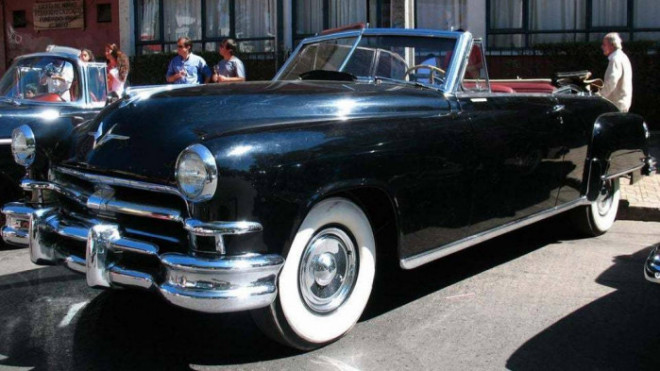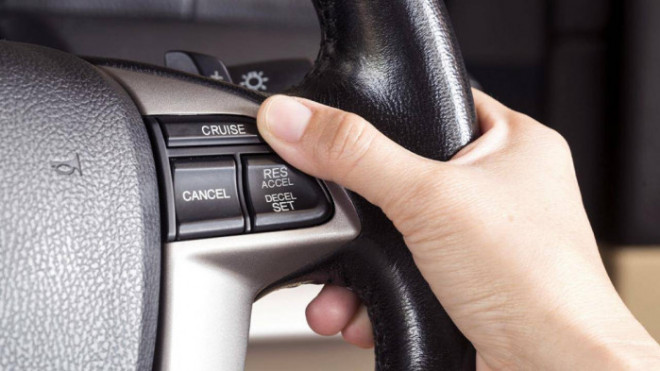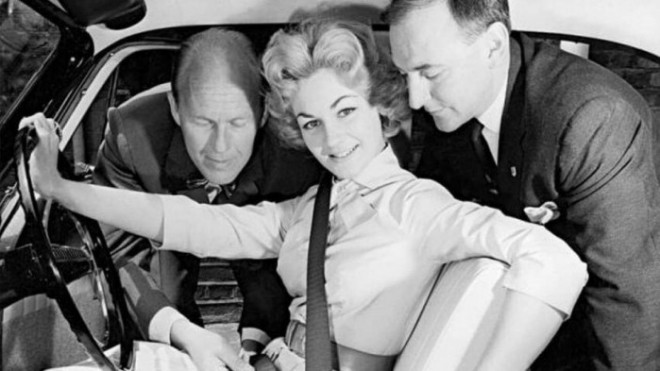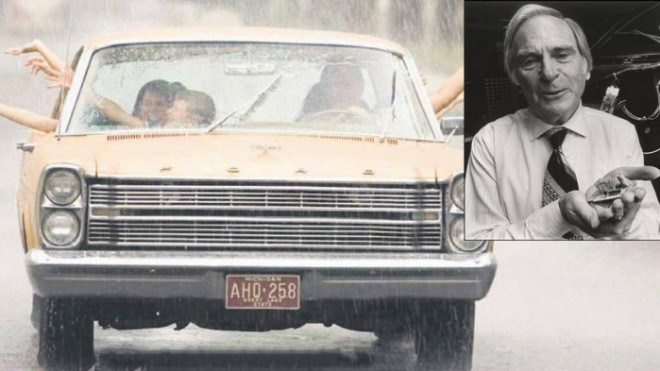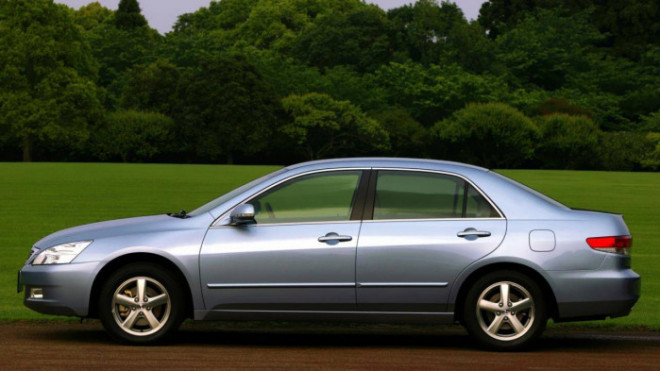Pioneering car models testing safety technology
The following cars have opened and helped to improve the application of new safety technology ideas in cars.
Electric starting system on Cadillac (1912)
The internal combustion engine basically works with an inertia-based feedback system from each cycle to start the next cycle. For this reason, early cars needed a rotary action to start the engine. This is both tiring and inconvenient, so engineers struggle to find other more effective ways.
Cadillac Model Thirty gets the world’s first electric starter
The first electric starter was developed in England in 1896 by HJ Dowsing. The first cars with electric starters were produced by Cadillac in 1912. This starting technology was gradually adopted on many other models and made starting the car easy and less dangerous. than.
Starter cranks were still in common use in the 1920s, even surviving much later in cars like the Citroen 2CV (1948-1990). They are used as a backup device in case the electric starter fails.
Car power windows on Lincoln Custom (1940)
Power windows first appeared in the 1940s, when it was added as a luxury feature to the 1940s Packard 180.
In 1941, Ford Motor Company introduced the first power windows on the Lincoln Custom (for limousines and seven-passenger sedans only).
The first electric window on Lincoln Custom
Later, many car manufacturers created more modern electric windows such as General Motor, Buick, Volvo, Mazda… using a switch located in the center console.
Currently, electric windows on cars are considered much safer than manual windows in the past.
Power steering on the Chrysler Imperial (1951)
The first power steering system was installed on a car in 1876 by a mechanic known as Fitts. The next generation was arranged on a Colombian truck with a capacity of 5 tons.
Power steering system first appeared on the Chrysler Imperial car
Robert E. Twyford, a resident of Pittsburgh, Pennsylvania USA registered a patent for a mechanical power steering mechanism in April 1900 (patent number 646,477 US) and used it on a vehicle. The first has an all-wheel drive system.
Although this system has been around for a long time, it was not until Chrysler Engineer Francis W. Davis appeared and launched a commercial car version that the system really became popular.
The power steering system that first appeared on the Chrysler Imperial was named “Hydraguide”.
Disc brake on Citroen DS (1955)
Until the 1950s, disc brakes were reserved for high-performance applications only, and even racing cars of the time still used outdated drum brakes.
Citroen DS is honored to be the first car in the world to own a disc brake system
It was not until Citroen launched the DS model in 1955 with disc brakes, other car manufacturers began to follow and this equipment gradually became popular.
Cruise control system on Chrysler Imperial vehicles (1958)
The cruise control system was invented in 1945 by blind mechanical engineer Ralph Teetor. His idea arose out of frustration while sitting in a car driven by his lawyer was too boring.
Blind mechanical engineer Ralph Teetor is the inventor of the cruise control system in cars
The first vehicle to use the system invented by Teetor was the 1958 Chrysler Imperial. By 1960, it had become a standard feature on all cars. Cadillac car.
Upper seat belt Volvo car PV54 (1959)
The first model to be honored to apply is Volvo PV54. With this belt, almost every weakness that has been discovered when using a 2-point seat belt is overcome such as the ability to hold the chest, shoulders, pelvis, helping the occupant not to rush forward. or thrown out.
3-point belts are still the safety standard of a car today
Volvo also initially only installed 3-point belts in the front seats, and it wasn’t until 1967 that they added them to the rear seats.
Later on, Volvo decided to give away the patent to other automakers for free, knowing it would save many lives. Since then, the safety standard of a car has required seat belts.
Seat belts have been mandatory for all children since 1989 and for rear seat passengers since 1991.
Windshield wipers on Ford Galaxie (1964)
Robert William Kearns (March 10, 1927 – February 9, 2005) was the inventor of the intermittent wiper system that has been used in most cars from 1969 to the present. His first patent was registered on December 1, 1964.
Robert Kearns said the root cause of his invention was an accident at his wedding in 1953, when a champagne bottle stopper hit his left eye, leaving it almost blind. sure.
This blinding accident made it difficult for Kearns to drive, especially in the rain. The constant movement of the wipers made it impossible for him to see.
Few people know that to get the patent for the car windshield wipers, Robert William Kearns went through a lot of hardships
He researched and modeled the intermittent wiper system according to the human eye mechanism that usually blinks for a few seconds, not continuously from left to right and then from right to left like the wipers at that time.
Kearns patented, installed wipers on a 1962 Ford Galaxie, and drove to Ford headquarters. Here Ford engineers examined his car, rejected his invention, and assumed that he was controlling the levers with a button in his pocket.
At the time, Ford engineers were experimenting with a vacuum-operated wiper system, while Kearns was the first to invent a discontinuous lever operated by an electric motor. After a while without Ford’s reply, Kearns continued to work alone.
Kearns sued Ford Motor Company in 1978 and Chrysler Company in 1982 for patent infringement. The Ford case went to trial in 1990 and there have been two such trials. Ford lost, but the court found Ford’s violation was not intentional and Ford only had to pay Kearns $ 10.1 million with a non-appeal agreement.
Standard airbag on Porsche 944 (1970)
Before the appearance of the Porsche 911, airbags have been in cars for quite some time. It was invented in the 1950s, but was not commercially adopted until the 1970s, though still as an expensive option.
Porsche 944
The Porsche 944 was the first commercial vehicle to be fitted with standard airbags for both driver and passenger, a revolutionary move and a vision beyond its time.
Anti-lock braking system ABS on Chrysler Imperial cars (1970)
Anti-lock braking system ABS or Anti-lock braking system, is an intelligent technology that helps prevent wheels from locking during emergency braking, avoiding wheel slip.
Anti-lock braking system ABS on Chrysler Imperial
It was originally used on trains and Concorde aircraft, before evolving on the Chrysler Imperial as the Sure-Brake (3-channel ABS). In the same year, Toyota introduced an electronically controlled anti-slip brake system on the Toyota Crown.
Automatic Emergency Braking – Honda Inspire (2003)
Both the Mercedes-Benz S-Class and the Honda Inspire received automatic emergency braking in 2003. But the Honda model is a much more accessible option, which also contributed to the Inspire’s success. be successful.
Honda Inspire
Nearly 20 years on from its introduction, automatic emergency braking has saved a lot of lives, but it’s still an optional feature, not standard.
at Blogtuan.info – Source: 24h.com.vn – Read the original article here
